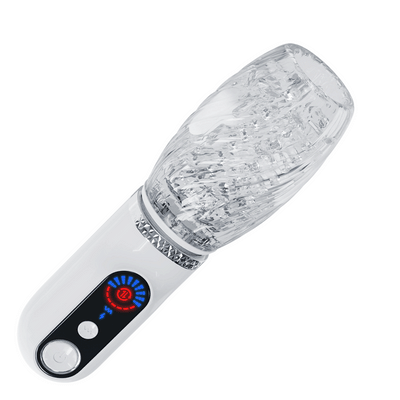Testicle prosthesis implant
Testicle implantation is a straightforward medical procedure involving the surgical implantation of prostheses into one or both testicles within the scrotum. This intervention is typically undertaken for a variety of reasons, including instances of cryptorchidism (the incomplete descent of one testicle), testicular torsion (the twisting of the spermatic cord), anorchia (the congenital absence of testicles), or the prior removal of testicles due to tumor presence or traumatic injury. This reconstructive process aims to restore both the physical and psychological aspects affected by these conditions, providing patients with a semblance of normalcy and alleviating the potential emotional impact associated with such medical challenges.
Why have a testicular implant?
Having a testicular implant is crucial for addressing both psychological and physical/aesthetic concerns that arise from the absence of one or both testicles. Some medical institution offer a straightforward and safe surgical procedure to implant testicular prostheses, ensuring they are positioned firmly, adequately, and aesthetically. The commitment extends not only to achieving a visually pleasing outcome but also to minimizing scarring, ensuring it is as small and discreet as possible. This is accomplished through a combination of advanced surgical techniques and skilled personnel, resulting in the most satisfactory results.
It's essential to understand that testicular prostheses don't function as substitutes for natural testicles. The significant distinction lies in the fact that artificial testicles, unlike their natural counterparts, don't produce sperm or hormones. Their primary purpose is to enhance the aesthetic appearance of the intimate area, offering individuals a more visually satisfying outcome.
What is a testicular implant?
A testicular implant involves the surgical placement of testicular prostheses, a procedure typically conducted on an outpatient basis, meaning the patient doesn't stay overnight in the hospital. In some cases, a brief hospitalization may be necessary. Anesthesia options include local (awake but without sensation) or general (completely asleep).
The duration of the intervention is typically around 30 minutes, with slight variations depending on the chosen method. The surgeon will select the most suitable procedure based on the patient's specific case, taking into account individual circumstances and needs. The surgeon will thoroughly explain all the treatment steps and the rationale behind the chosen approach.
Upon completion of the implantation, the testicular area is securely bandaged to safeguard it from friction and support the healing process. This outpatient procedure offers a relatively quick and efficient means to address testicular-related concerns.

Testicular implant. Important factors.
As mentioned earlier, the surgeon carefully evaluates your specific case to choose the most suitable method based on your unique circumstances and needs. Several factors play a crucial role in this decision-making process:
- Patient's Overall Health: The general health of the patient is a pivotal consideration in determining the appropriate method.
- Reason for Testicular Absence: The underlying cause, whether it's the removal due to cancer or tumor, testicular torsion, anorchia, trauma, etc., significantly influences the choice of approach.
- Healing Capacity: The ability to heal can vary based on factors such as smoking, alcohol consumption, and medication use.
- History of Scrotal Surgeries: Any prior scrotal surgeries are taken into account when deciding on the most suitable method.
- Patient Requirements: Understanding the patient's specific requirements and preferences is integral to tailoring the procedure to individual needs.
After the intervention, there are additional factors to consider, including the potential for infections, the body's adaptation to the implant, and the overall healing process. Periodic reviews will be conducted, and patients will be provided with guidelines to ensure proper healing and adaptation to the implant. Regular follow-ups contribute to the ongoing success of the procedure.
Recovery after testicular implantation.
In the initial 48 hours post-implantation, it's normal to experience some discomfort and pain in the genital area. The surgeon may prescribe painkillers if deemed necessary to alleviate any pain.
Expect fatigue and swelling, with tenderness in the scrotum persisting for a few days. Keeping the bandage on for several days is advised to protect the area during this initial recovery period.
Typically, individuals can resume their daily activities between a week and ten days after the procedure. However, it's crucial to exercise patience and adhere to the doctor's instructions diligently. Your surgeon will provide specific details regarding your unique healing process, including guidelines on when it's appropriate to resume sexual activity, regain weight, engage in sports, and more.
If any abnormalities arise, such as excessive inflammation, fever, severe pain, or redness in the area, it's imperative to promptly notify your doctor. Addressing any issues swiftly ensures the most effective resolution and contributes to a smoother recovery process.
Risks and complications of testicular prosthesis implantation
While testicular implantation is a straightforward procedure, it, like any intervention, carries inherent risks and potential complications. These may include:
- Infections: There is a risk of infection post-implantation, although with proper post-treatment care, this risk can be minimized.
- Abnormal Healing: Complications related to the healing process may occur, necessitating close monitoring during the recovery period.
- Fluid Accumulation: Fluid accumulation in the scrotal area is a potential complication that may arise.
Formation of Hematomas or Bleeding: Hematomas or bleeding can occur, albeit infrequently, as a result of the surgery.
It's important to note that when the procedure is conducted under optimal conditions, and post-treatment care is diligently followed, complications are rare. Vigilant monitoring and adherence to the prescribed aftercare instructions significantly contribute to minimizing potential risks. Regular communication with the healthcare provider ensures any issues are promptly addressed, enhancing the overall safety and success of the procedure.










Leave a comment